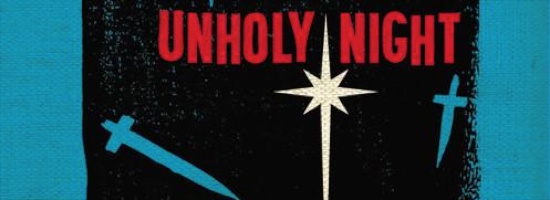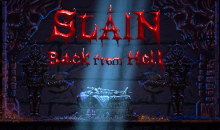Silent Night, Unholy Night
Just who were the wise men, really?
Sure, I knew the story. I was raised Lutheran. Three wise men appear in the middle of the night, offering gold, frankincense and myrrh to Joseph and Mary to celebrate the birth of baby Jesus.
But what happened next? It was a question I never considered until picking up a copy of Seth Grahame-Smith’s 2012 tale Unholy Night. But it’s a valid question. For all their importance to the story, the wise men don’t get much of a backstory. Where do they come from? The east. here do they go? Home. (Man, if the Bible weren’t filled with tales of blood, murder and deception, it’s be boring as hell, being light as it is on exposition.)
So Seth Grahame-Smith, author of Abraham Lincoln: Vampire Hunter and Pride and Prejudice and Zombies (which proves my theory earlier stated about how idiots will buy tho things nailed together that have never been nailed together before) did what early Christians, second-century Christians and King James failed to do: fill in the wise men’s backstory. Unholy Night tells the tale of Balthazar, a thief from Antioch who runs afoul of King Herod. While escaping Herod and the Judean army, Balthazar joins up with two other criminals, Gaspar and Melchyor. Together the three criminals escape Herod’s clothes, making their ay to Bethlehem, where they meet up with Joseph and Mary in the famous manger. Balthazar takes it upon himself to protect Joseph and Mary’s child after witnessing the Judaean army slaughter infants on King Herod’s orders. For the rest of the book the fugitives try to stay one step ahead of King Herod, Augustus Caesar and Caesar’s enjoy, one Pontius Pilate.
Unholy Night was a fun read, and very quick. It’s one of those novels you can read while commuting to and from work. While I didn’t think Pilate had to be in the story, it was nice to get a different perspective on the rest of the biblical characters, especially Herod. After two thousand years and the establishment of many religions based on its tenants, it’s easy to forget that the Bible is also a story or people. Grahame-Smith humanizes the Biblical characters as much as he can. With Jesus a mere child in this time frame, Grahame-Smith can focus on the adults, which to does to great effect. With Unholy Night, Grahame-Smith shows he’s more than the one-trick pony that spawned an industry of classic/horror mashups, like Little Women and Werewolves, Sense and Sensibility and Sea Monsters or Android Karenina. Grahame-Smith had nothing to do with the genre he spawned; by the time it got popular he had moved on to Abraham Lincoln: Vampire Hunter. Unholy Night continues his trend to stay one step ahead of being typecast in a particular genre. I’m looking forward to what he writes next.
tl;drs
Blank is a blanker version of blank: Unholy Night is what Exodus: Gods and Monsters would have looked like in print.
Recommended if you like: Alternate history tales; taking liberties with Biblical narration
Better than I expected: The main character Balthazar is compelling, for a likable criminal.
Worse than I hoped: Not sure Pontius Pilate needed to be in the story; his inclusion seems like an easy addition of a familiar name instead of a genuine character.
Unholy Night would work better as a(n): I could see it as a movie, easily. Grahame-Smith’s novels have a style that adapts well to a visual medium.
Verdict: Unholy Night is a breezy little alternate history tale that takes a well-known story and spins it on its head.






